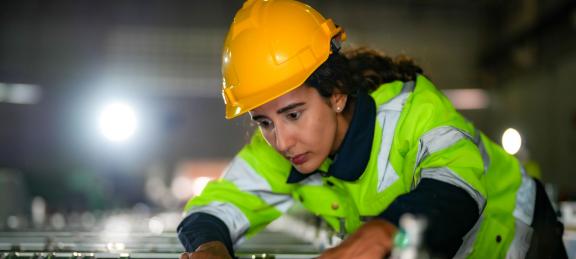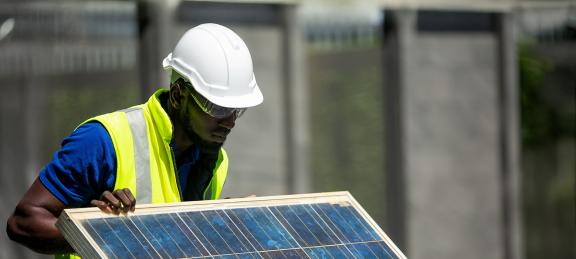&
&
Mitigation
The context
With the rapid urbanisation taking place around the world, cities offer risks and opportunities when it comes to addressing the climate crisis. In so called ‘linear systems’, cities consume over 75 per cent of natural resources, produce over 50 per cent of global waste, and are responsible, directly and indirectly, for emitting between 60 to 80 per cent of greenhouse gases. The Intergovernmental Panel on Climate Change (IPCC) has identified cities and urban infrastructure as one of the four critical global systems that are key to reducing greenhouse gas emissions and to limiting global warming levels to less than 1.5°C above pre-industrial levels.
Although this presents investment opportunities, the public sector has been unable to access the finance needed to invest in low emission, climate-resilient urbanisation due to a range of barriers. These barriers include a lack of enabling policies and integrated planning systems, lack of upfront financing and structures to cover pre-feasibility studies and project design for bankable sustainable urban projects, limited support for fostering new business models and technologies, and longer payback periods for low emission, climate-resilient urban investments to name a few.
GCF’s unique role
Using an ecosystem-based approach with energy-efficient constructions, installations, and appliances (minimising embodied energy and maximising circular approaches), investments in this result area support the retrofits of existing buildings and city precincts and the construction of new, green buildings and districts. Cities could contribute to the emissions reductions needed for the 1.5°C target by improving the energy efficiency of building stocks and their associated infrastructure such as district heating and cooling systems. Furthermore, the Green Climate Fund’s (GCF) investments are directed to improve compact and resilient urban development. The strong linkage across urban development and housing policy, building codes and transport systems make it feasible to pilot at scale a ‘zero emission areas’ approach in cities. Building codes can make urban areas effective carbon sinks, and passive design standards and use of recyclable and renewable materials can enhance energy-efficiency.
The decarbonisation of urban energy systems (through scaled up distributed renewable energy) and the enhancement of urban circular economy are also the focus of GCF’s paradigm-shifting, transformational investments in this sector.
Through four complementary pathways, GCF supports developing countries’ efforts towards sustainable urbanisation:
- Transformational planning and programming – GCF works with governments and partners to strengthen the capacity of urban institutions to foster policy integration, improve skills in green procurement, and plan, programme, and build a pipeline of climate investments.
- Catalysing innovation in the urban sector – GCF invests in policy, institutional, business model, and financial and technological innovations with the potential to break existing trends and scale up climate resilience impact.
- Mobilising finance at scale – GCF’s unique financing instruments can catalyse private, institutional, and commercial financing. This includes de-risking a pipeline of low emission, climate-resilient urban investments through blended finance and improving the access of cities to international and domestic capital markets.
- Coalitions and knowledge exchange to scale up success – GCF works with countries and various stakeholders to generate knowledge from its urban sector portfolio, leverage partnerships with urban networks and coalitions to disseminate lessons and replicate good practices to reach scale.
Resources

SAP Technical Guidelines: Cities and climate change
21 Feb 2023
Traditionally, cities are defined as large human settlements, with no one standardized definition applied internationally. Frequently, national governments have criteria they use to define urban areas. These criteria can vary to include aspects such as administrative boundaries, living conditions or population density. Another approach is what is termed “urban agglomeration”, which considers the extent of an urban area, or sometimes, that of a built-up area, to identify a city’s boundaries.

SAP Technical Guidelines: Energy efficiency for industry and appliances
21 Feb 2023
This publication provides technical guidance for the preparation of SAP proposals. Energy efficiency (EE) is the process of reducing the energy consumption of infrastructure, facilities, machines, devices, products, services, business processes, activities and transport. It can be thought of as the first fuel of a sustainable world and as such it has a key role in ensuring cost-effective energy transitions.






























